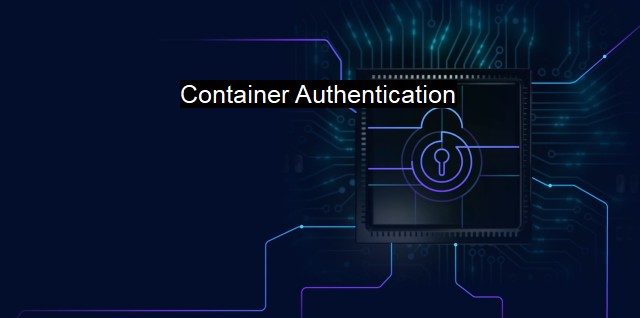What is Container Authentication?
Container Authentication: Securing Virtualized Environments from Cyber Threats
Container Authentication is a crucial aspect in the IT industry, mainly related to cybersecurity and antivirus solutions. It references a method used to enhance the integrity and security of interconnected software applications by confirming the identity and permissions associated with different system components, in this case, containers.Containers, in the context of software development and IT, are stand-alone, executable packets of software in which system libraries, settings, and applications are encapsulated. These are compiled for secure run-time operations without system constraints. Therefore, ensuring the authentication of these containers is a paramount consideration for robust cybersecurity measures.
Container Authentication primarily revolves around the principle of ensuring that all containers you integrate into your environment are secure and free of any malicious elements. Its main goal lies in the authorization, identification, and confirmation of the data and programs enclosed within these software containers.
This authentication process plays a critical role in maintaining the overall health of an IT environment. When individuals or applications interact with a container, they want to be sure that they're interfacing with a legitimate component. If the container is unauthenticated or not validated, the interacting entity is exposed to potential security risks, including data breaches and virus infections.
Without proper Container Authentication, cybercriminals could inject malicious codes into the containers. They might create, modify, or replace software containers with compromised versions concealed under the layers of the given code. Consequently, the integrity of the containers would be undermined or compromised, and data breaches can occur unknowingly until it is too late.
Hence, the existence of Container Authentication processes ensures that containers within the cybersecurity framework can be trusted and are free from unauthorized modifications. The first strategy in creating secure software containers is by using identification markers or tags. These tags indicate whether a container's digitally signed image is trustworthy.
Another practice includes verifying these signatures during the runtime process. It shelters the users and organizations against untrusted container images by keeping malicious elements at bay, as they mostly originate from unsigned or unverified sources. This method is akin to asking for a digital ID before gaining entry into a secured premise.
Container Authentications offers its users many advantages. It minimizes the risk of coming into contact with unauthorized content or shady software. Therefore, systems and applications that are composing, running, or even just interacting with secure containers, can operate with confidence on all fronts.
To secure the data and services provided by these containers, organizations need to establish and enforce robust access control mechanisms. They should create strategies around data encryption/de-encryption, two-factor authentication, container image scanning, and using threat intelligence to identify vulnerabilities.
Encrypted connections should be established between users and containers to ensure secure communication, averting unauthorized entities from accessing or modifying the data. These practices not only protect the container application but further strengthen the basic principle of Container Authentication.
In our interconnected world where containerised applications are the norm, Container Authentication is an indispensable tool that bolsters cybersecurity. Any discrepancy in its implementation can leave an incalculable window for potential threats that could infiltrate the system. Therefore, understanding and enforcing authentications for software containers connect the dots for a comprehensive, stable, and secure cybersecurity landscape.

Container Authentication FAQs
What is container authentication?
Container authentication is a process of verifying the identity of a container before granting access to it. It ensures that only authenticated and authorized containers can access sensitive data and applications within the container ecosystem.Why is container authentication important in cybersecurity?
Container authentication is vital in cybersecurity because it prevents unauthorized access to containerized apps or data. It ensures that only authenticated and authorized entities can access the container ecosystem, thus mitigating the risk of cyber attacks and data breaches.What are the common types of container authentication?
There are several types of container authentication, including platform-based authentication, token-based authentication, image signing, and code signing. Platform-based authentication involves using security features provided by the container platform, while token-based authentication uses tokens like JWTs or OAuth to authenticate containers. Image signing and code signing use digital signature algorithms to verify the authenticity of containers.What is the role of antivirus in container authentication?
Antivirus plays a crucial role in container authentication by providing malware protection to the container ecosystem. It scans container images and the host system for malware or viruses, thus preventing any malicious software from accessing sensitive data or applications. Antivirus also helps in identifying vulnerabilities within the container ecosystem and providing remediation.| | A | | | B | | | C | | | D | | | E | | | F | | | G | | | H | | | I | | | J | | | K | | | L | | | M | |
| | N | | | O | | | P | | | Q | | | R | | | S | | | T | | | U | | | V | | | W | | | X | | | Y | | | Z | |
| | 1 | | | 2 | | | 3 | | | 4 | | | 7 | | | 8 | | |||||||